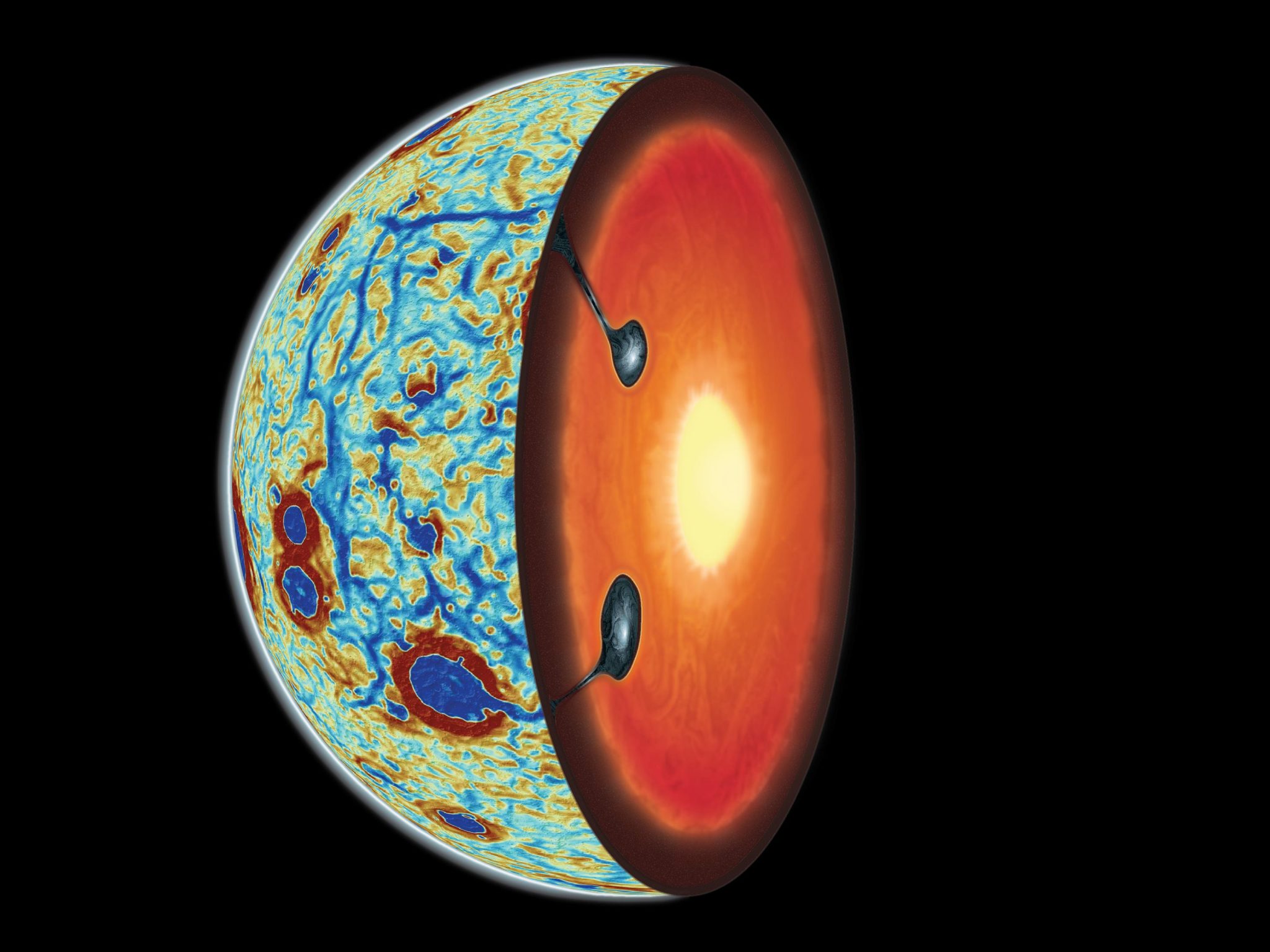Surprise: the lunar surface "sank" beneath the crust
Published by Adrien - Friday, April 12, 2024 - Other Languages: FR, DE, ES, PT
Source: Nature Geoscience
Source: Nature Geoscience
Follow us on Google News (click on ☆)
Researchers from the University of Arizona have shed light on the mystery of the Moon's "asymmetrical" geology, combining computer simulations and space data. Their study, published in Nature Geoscience, reveals a crucial chapter in lunar history, shedding light on the evolution of its interior and, by extension, that of planets such as Earth or Mars.

Diagram of the gravity gradient of the visible side of the Moon with a cross-section showing two ilmenite-bearing downwellings resulting from the lunar mantle overturn.
Credit: Adrien Broquet/University of Arizona & Audrey Lasbordes
The Moon's creation, about 4.5 billion years ago, resulted from the collision between the Earth and a small planet. This cosmic disaster hurled debris into space, which then clumped together to form our natural satellite.
Our knowledge of this process largely comes from analyzing lunar rock samples collected by the Apollo missions over fifty years ago and subsequent satellite observations, revealing a surprisingly high concentration of titanium on the Moon's visible face. The explanation for this distribution had remained a mystery until now.
The Moon formed quickly and at a high temperature, likely covered by a magma ocean. As this magma cooled and solidified, it formed the lunar mantle and crust. However, dense minerals like ilmenite, rich in titanium and iron, created gravitational instability, causing them to sink into the Moon's interior.

The visible side of the Moon, with its dark regions or "seas", covered in volcanic flows rich in titanium (center), constitutes the familiar aspect of the Moon from Earth (left).
The dark region is surrounded by a pattern of gravity anomalies (blue in the right image) interpreted as the vestiges of dense material having sunk.
Credit: Adrien Broquet/University of Arizona
This "mantle overturn" process has left behind remnants manifested by gravitational anomalies, revealed by NASA's GRAIL mission. These anomalies encircle vast dark regions on the Moon's visible face, the "seas," covered in volcanic lava flows.
The recent study confirms that these gravitational signatures match the predictions of models of sinking ilmenite layers, bringing the first physical evidence of a global overturning of the lunar mantle more than 4 billion years ago. This discovery helps to specify how and when this event occurred, highlighting the Moon's fundamental asymmetry in all aspects, notably the Ocean of Storms (Oceanus Procellarum) region, which is lower, has a thinner crust, and is rich in elements like titanium and thorium.
These findings have significant implications for the future exploration of the Moon, particularly for the Artemis missions, which will benefit from an updated understanding of our satellite.
Halley's comet is now approaching Earth
5 days ago
What to do about allergies?
6 days ago
Most mammals have 5 fingers: why?
7 days ago
More...